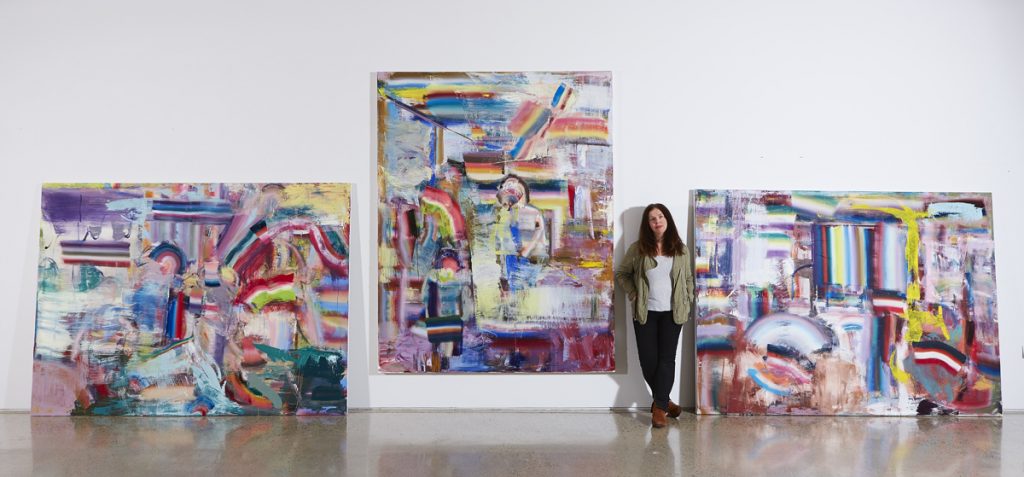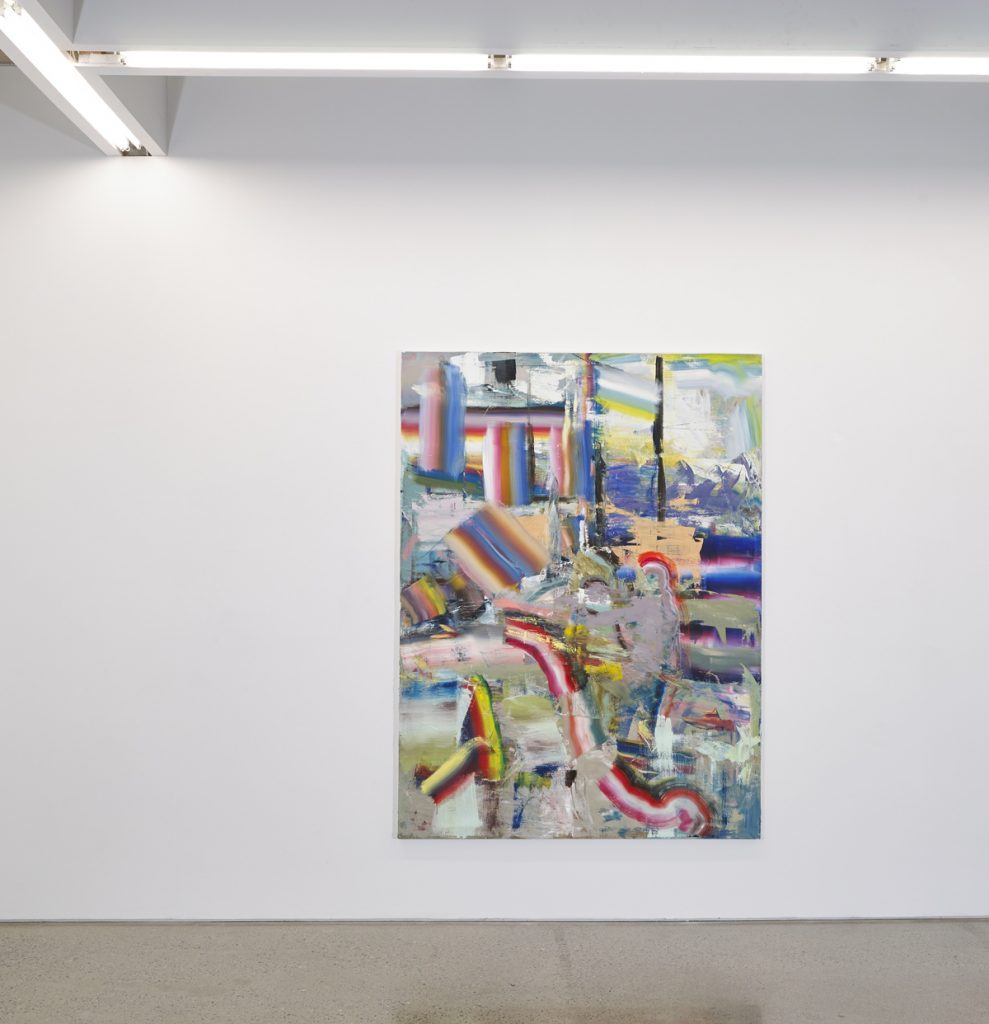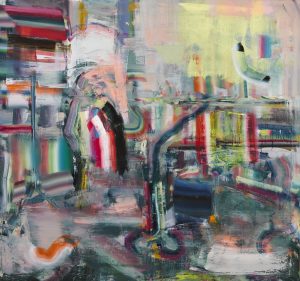Proto Fiction And The Sleep of Reason | 2019
10 OCTOBER – 9 NOVEMBER 2019
Link to text written by Chris Clarke
10 OCTOBER – 9 NOVEMBER 2019
Link to text written by Chris Clarke
2018 Prism, The Art and Science of Light, The Glucksman Gallery, UCC, Cork, Ireland
30 November 2018 – 10 March 2019
The Glucksman University College Cork
Artists: Polly Apfelbaum, David Batchelor, Alan Butler, James Clar, Diana Copperwhite, Jenny Holzer, Mark Joyce, Brigitte Kowanz, Dennis McNulty, Emer O’Boyle, and Grace Weir
Curated by Chris Clarke and Fiona Kearney in association with the Irish Photonic Integration Centre at the Tyndall Institute, UCC
Light is often thought as being comprised of the single colour of white. However, white light, when observed through a prism, can be seen to consist of many colours. PRISM: The art and science of light is an exhibition of Irish and international artists that takes as its starting point Isaac Newton’s observation of the visible spectrum, exploring light and the ways in which it has been used as subject matter and artistic medium. Light-enabled technologies underpin the internet and among its research areas, IPIC at the Tyndall Institute advances energy efficient ways of transmitting, storing and displaying information. PRISM presents artworks that record and investigate how light shapes our world.
Mark Joyce uses his knowledge of lenses, spectroscopes and other instruments to create works that illuminate fundamental aspects of light, with his abstract paintings making reference to Newton’s colour wheel as well as to modernist painting. David Batchelor’s practice has long investigated the luminescent qualities of colour. A hanging bundle of low-energy bulbs encased in recycled household plastics gently illuminates a gallery window with the colours of the spectrum, while his wall sculpture Glowstick 7 is a vibrant and sharply angular composition of
coloured light. Emer O’Boyle’s installation is inspired by Cecilia Payne Gaposchkin who discovered the constitution of stars in 1925. Her chandelier of 603 coloured test tubes, each inscribed with the individual signature of University College Cork staff and students, reflects the university’s commitment to gender equality in the sciences.
Light illuminates space, as well as connecting us to the universe and each other. US based artist, Polly Apfelbaum’s new work Free Form Planets comprises an installation of rainbow- coloured discs, scattered across the gallery walls recalling both otherworldly satellites, glowing orbs and colour wheel charts. Her Hudson River Valley Nirvana woodblock prints refer to the dynamic skies captured by the Hudson River School painters in the mid-19th century as well as to the more psychedelic effects of Op Art. Diana Copperwhite’s painting Radiator depicts a spectrum of brilliant colours that glow from within a field of darkness and her densely layered, abstract paintings offer a more psychological take on perception, focusing on how we process information and formulate reality, by drawing on personal memory, found imagery and fleeting, fragmentary impressions.
Much like the spectrum of colour that becomes visible when white light is filtered through a prism, Grace Weir’s film installation uses a single artwork to present an array of historical and scientific associations. A reflection on light weaves different moments relating to the
Irish modernist artist Mainie Jellett’s painting Let there be light. From photographs of the interior of Jellett’s Dublin apartment to the notebooks of her grandfather, a scientist and researcher on polarised light at Trinity College Dublin, to the hanging of the artwork in the School of Physics in Trinity.
Artists are quick to adopt new technologies in their work and light-emitting diodes, better known as LEDs, have been used in artworks soon after they were invented in 1962. In Dennis McNulty’s Running up that building, a sheet of foil-backed plasterboard sits against the corridor wall, its reflective surface drawing the viewer in to witness a subtle text transmitted through LED. James Clar’s Triple Oscillation uses LEDs to create overlapping lines of coloured light in a kaleidoscopic looping pattern, suggesting a continuously unfolding form.
The US artist Jenny Holzer uses LED displays to convey her Truisms, an ongoing series of short sayings that communicate viewpoints that are in turns comic, provocative, and insightful. Her
work crosses over between large scale presentations in the public domain such as Times Square in New York, to installations in museums worldwide such as the 4 metre high column of alternating blue and white LED displays in the Glucksman.
The graphics of a computer screen are generated through different combinations of red, green and blue light. Alan Butler’s paintings take their form from the landscape photographs that come with modern computer operating systems, with the pixels of digital imagery transferred into colours from the visible spectrum. The medium of light is central to Brigitte Kowanz’ work. The artist sketches a relevant word such as Immersion or uses Morse code to reference an important date in digital history, here the date YouTube went online. These referents are placed between two mirrors to create an illusion of infinite space, inviting us to think about how
easily we become immersed in the digital world
The ideas and experiences of PRISM will be extended into an imaginative season of public activities including maker workshops, art/science talks, art courses, family events, teacher masterclasses and a schools programme supported with online resources.
PRISM is supported by University College Cork, The Arts Council Ireland, and private philanthropy through Cork University Foundation.
It is possible to arrange for press interviews with some of the participating artists. For further discussion of the exhibition, press images or more detailed information, please contact:
Chris Clarke, Senior Curator, The Glucksman, University College Cork.

Diana Copperwhite is a painter who explores the relationship between colours, gestures, figuration and representation. Copperwhite amalgamates images from the internet, photographs, and real life, unifying these sources in paintings that critically assess the medium’s ability to represent images, sensations, and ideas. For dlr Lexicon she will show paintings and a large wall installation. The pattern for the wall piece is derived from an on-going series of random images and videos sent to her by people in the Dún Laoghaire area.


Double Vision at the Municipal Gallery DLR Lexicon
Febuary – March 2018
Joint show with her sister and designer Shirley Copperwhite.
01.06 – 01.07 2017
‘As is well known, the word ‘orbit’ refers to a set route or path around a given point: we on earth orbit the sun, just as the moon orbits us. Perhaps less known, though, is that the word is etymologically coupled with a distinct sense of the optical: from a fourteenth century French word for ‘eye socket’. Seeing, in this understanding, is always underscored by a sense of movement or voyaging: when we look at someone or something, we simultaneously tread a track around it. Perhaps we come close to this object, but we don’t get to touch it. [continued below]
I kept this double meaning in mind when thinking about Diana Copperwhite’s recent paintings. In this latest exhibition, Crooked Orbit, these are large and at least initially discordant works. It seems as though no colour has been left aside, from lurid fuchsias and cobalt blues, to neon yellow and swatches of minty green. Recurring throughout the canvases, there is also a gradient effect achieved by loading the brush with different shades of paint; and this has a consequence of suggesting that these paintings have almost outgrown the tools of their creation, those tools then being forced to convey, through colour, as much as they possibly can. Sometimes these gradient interventions are vertical and regular; at others, they are less uniform, cast in a halting semi-circle or upturned ‘u’. Throughout, they act to create the impression of space within the paintings: in one, a narrow swathe of grey, pink and white, has the look of an outstretched arm, a slight sag in the middle where the elbow could be; in another, a flat vertical plane of what looks like four gradient drags cuts a dint of architectural space. But, even when working in unison, each of these is just one gesture, loaded to capacity and worked until it dissipates, the paint run out or stopped short from further decline. Representation is at most, never quite; cast as it is though a series of distinct marks, the whole remains fragmentary, gestured towards but never quite pinned down’.
Extracted from Awkward Angle of Perception, by Rebecca O’Dwyer.